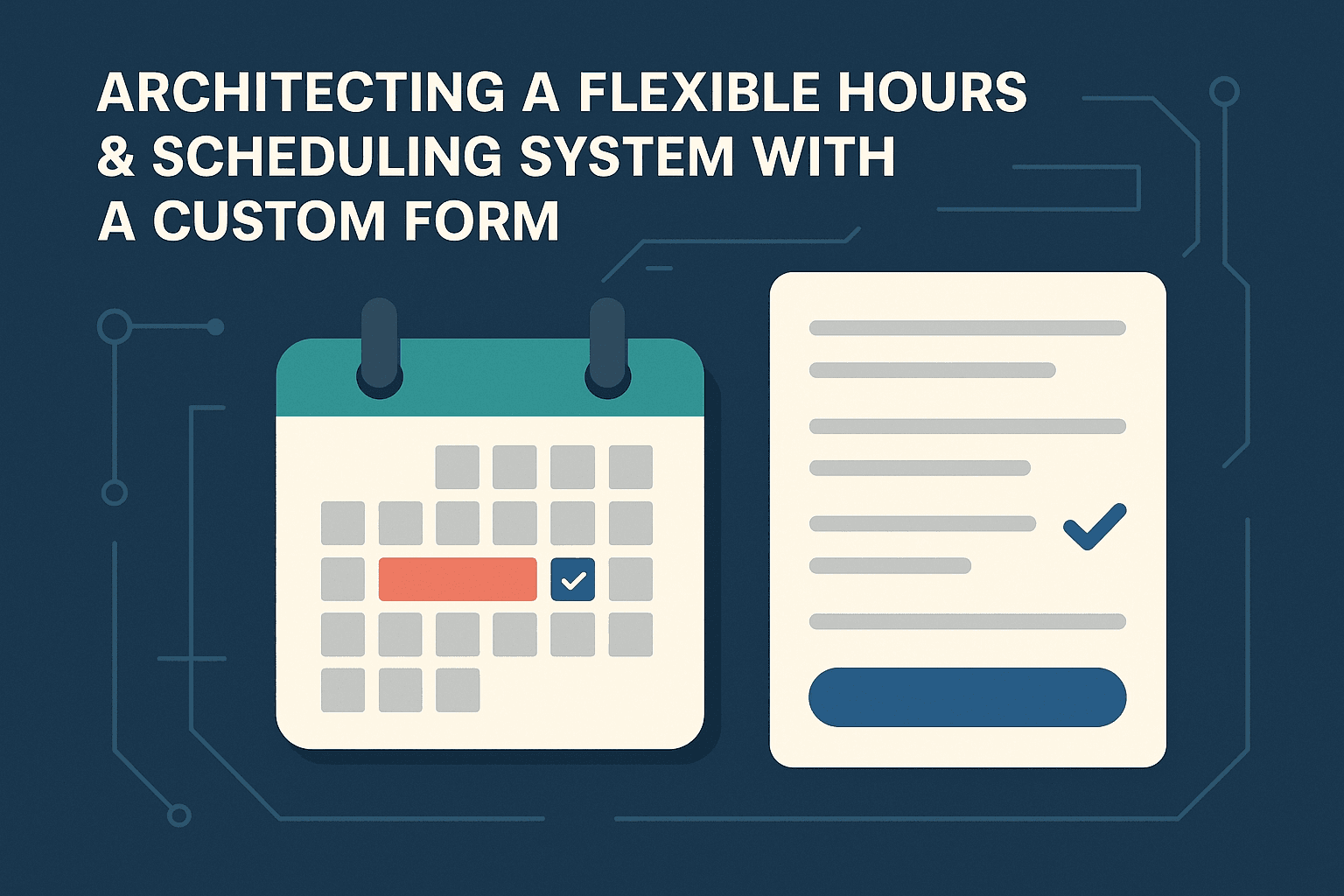Architecting a Flexible Hours & Scheduling System With a Custom Form

Managing business hours seems simple, until you need to support real-world complexity.
A typical organization doesn’t just have “open and closed” times. They may have:
Regular weekly hours
Holiday closures
Special hours for events or seasonal changes
Date-range rules that override standard times
Designing a system that allows non-technical users to manage all of this; without breaking anything requires careful thought across data modeling, validation, and UI design. Recently, I built a custom hours management form that solves this problem in a clean, scalable way.
This article breaks down how it works and the decisions behind it.
1. Understanding the Requirements Before writing any code, I outlined the real-world scenarios the system needed to handle:
Weekly recurring hours (e.g., Monday–Thursday 10am–7pm)
Special hours tied to specific dates
Full closures like holidays or emergencies
Events that span multiple days or have no time component
Overlapping rules where date-based hours override weekly hours
A simple UI that makes sense to non-technical users
The final system needed to answer the question:
“For any given day, what should the user see?”
This required modeling regularity first, then layering exceptions on top.
2. Designing the Data Structure To avoid complexity and weird edge cases, I separated the data into clear categories:
Weekly Hours For recurring schedules:
Day of the week (Monday-Friday)
Start time
End time
Special Hours For short-term changes:
Date or date range
start/end time
Comments or descriptions
Closures Specific holidays or days where time doesn’t matter:
Type
Date or date range
Reason or description
This separation avoids mixing incompatible logic, like trying to apply “every Monday” rules to a holiday that only happens once a year.
3. Building a Custom Hours Form That’s Actually Easy to Use The most important part wasn’t the database, it was the editor.
My goal: Make it easy for someone with no technical background to update hours without breaking anything.
Here’s what the custom form includes:
A. Weekly Hours Table
Dropdown for day of week (Monday - Friday)
Start/end time pickers
Auto-sorting by weekday
Validation for correct time ranges
B. Special Hours Form
Calendar picker for date or date range
Optional time range fields
Comment field for context
Clear “exception” vs “normal hours” visual treatment
C. Closure Scheduler
Simplified form for holidays
No time input
One-click presets (“New Year’s Day”, “Christmas Eve”, etc.)
Multi-day support
D. Real-time Validation
The form runs checks like:
“End time must be later than start time.”
“Special hours cannot overlap with closures.”
“Date range must be valid.”
These appear as inline feedback, not system errors, which creates a smooth user experience.
4. Applying Priority Rules When displaying hours on the front end, the logic follows a clear hierarchy:
Closures (highest priority) If a date falls within a closure range, the system shows the closure, not the regular hours.
Special Hours If a special event exists on the same day, it overrides weekly hours.
Regular Weekly Hours Default fallback if nothing else applies.
Each category is preformatted into a simple, front-end-friendly structure like:
{ "type": "Special Hours", "date": "Dec 18, 2025", "time": "3:00 PM – 6:00 PM", "is_closed": false, "comments": "Early closing for winter showcase" }
This makes front-end rendering predictable and consistent.
5. Solving Real Edge Cases A surprising amount of time went into edge cases:
Multi-day closures (e.g., Dec 24–26)
Events with dates but no times
Overlapping special hours
Centers with hours on some days but not others
“Closed but has a comment” event types
Handling partial overrides (e.g., open half the day for a holiday)
Designing with these in mind made the system solid and adaptable.
6. Key Lessons Learned 1. Business hours are deceptively complex. Once exceptions enter the picture, a “simple hours table” becomes a scheduling engine.
2. Separate recurring versus date-based rules. Trying to merge them leads to spaghetti logic later.
3. Good validation prevents bad data. Most problems can be avoided at the form level.
4. Prioritization rules should be explicit. Weekly → Special Hours → Closures.
5. A thoughtful UI matters. If users can manage the schedule without reading documentation, you’ve done it right.
Conclusion
A flexible hours and scheduling system isn’t just about storing open/close times; it's about creating a maintainable structure that supports real-world behavior and gives users confidence.
By separating concerns, prioritizing exceptions, and building a clean custom form, you can create a system that is both powerful and easy to use. No matter how complex the scheduling rules become.

